We did sooooooo much in Mandalay and saw sooooo many memorable things that I forgot one visit in the previous post.
Near Amanapura, another old Burmese Capital, there is a shallow lake crossed by a rickety teak bridge – U Bein (the bridge was named after the mayor of Amanapura) Bridge was built over 200 years old and is still the longest Teak span in the world – and it is spectacular.
The views around the lake from the bridge were not bad either. This fishermen in his narrow boat seemed to attract water fowl.
I was fascinated by this dead tree and the fisherman standing nearby
Row boats were used to shuttle us back. As we crossed the bridge, they were slowly getting into position to get our business.
From the water, the bridge looks even more spectacular and light – one wanders how it stayed up there so long
This tree was full of owls and other birds looking for something to eat
Near the bridge is a town known for its marble statues of Buddha. However, you can request any face you want when you order a statue and therefore the town is full of faceless statues, just waiting for an owner…
After Mandalay, we flew to Bagan – home of 4000 stupas.
We arrived right around sunset and therefore our first taste of the area was temples and orange light
and beautiful sky
When there are 4000 stupas, some are more modern than others. The tradition continues, but the design is not always ‘traditional’. On seeing this modern concrete based stupa, in the background, Joan commented that “maybe there is a revolving (or was it revolting) restaurant on the top of that Stupa!”
We stayed at a very nice hotel just outside of the ‘old Bagan’. In the morning, before we set off for the day, I went walking in the neighborhood. There were several stupas immediately outside the front gate.
However, normal life continues right at the base of all the temples and stupas
First stop of the day is a market. While there are some souvenir shops and stores that are clearly meant for tourists, most of the market is intended for locals doing their everyday shopping. The choice of goods for sale is large and the place is quite busy
There are many ladies selling vegetables which must have been picked just the day before
However, even with all this choice, not every one is in a shopping mood
We later went to Shwezigon Paya – Shwe means gold and one look tells immediately where the name came from
Similar to Shwedagon Paya, in Yangon, there is a lot going on in and around the base of the stupa. Some are coming to make offerings
Some just happen to find a good spot to stop
The many superimposed roofs can make for interesting views
We visited more stupas, some with sitting Buddhas
some with standing Buddhas
I should have written the name of where we stopped as I am now not able to remember where we saw all of this. I guess when there are 4000 stupas, it is easy to get confused.
We have lunch along the Irrawady River. The air is so pure and clean that the clouds seem to be artificial and seem closer to earth than normal. I had already seen this effect once, on a lake in Northern Finland.
and visit a Lacquer ware shop in the early afternoon. This worker manually removes the lacquer on the inside of these bowls to reveal the slats of bamboo that it is made of (you can see completed bowls on the floor) – the lacquer on the outside will remain, as that is what provides any strength since the bamboo is paper thin…
Decorating the trays takes a lot of concentration – and the only light is what is provided by this open window
In the afternoon there are more temples
and standing Buddhas
but not all Buddahs are the same. This one has much more of an Indian or even Khmere flavour.
There is another spectacular sunset with a plethora of temples. We climb on top of a stupa and mo matter which way you look, the view is incredible: away from the sun
Perpendicular to the sun
or even directly into the sun
There is one more day in Bagan before we move on. There are many more photos to share….
(1236 Page Views)

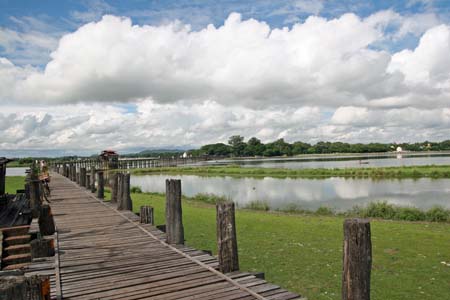




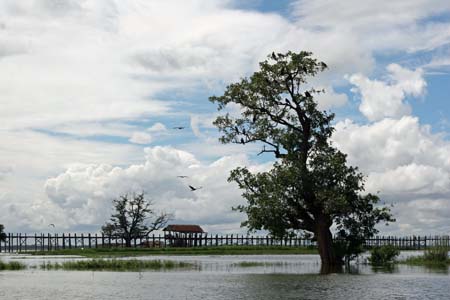

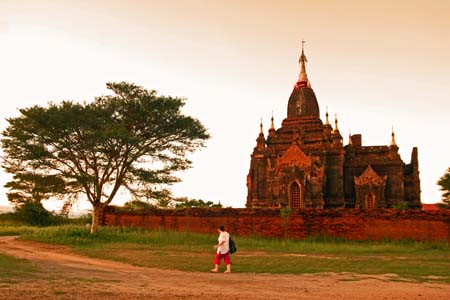

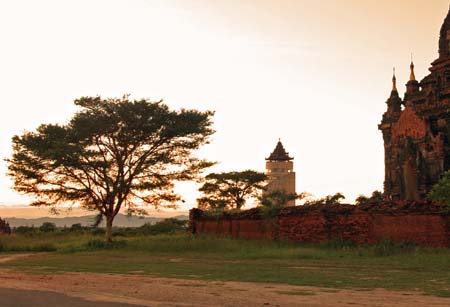

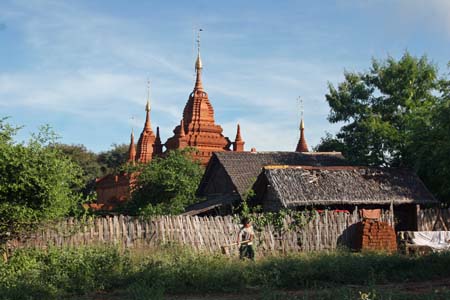


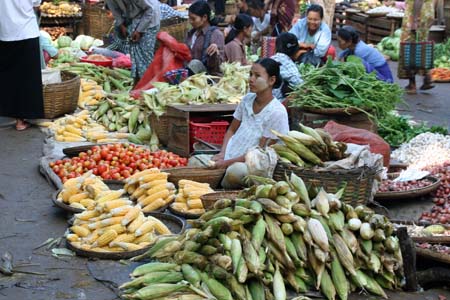

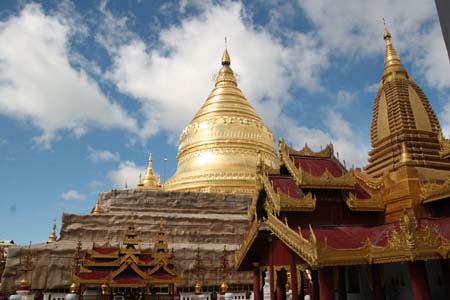
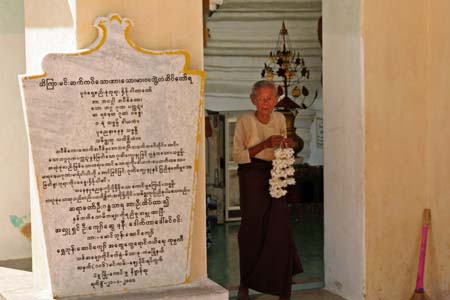

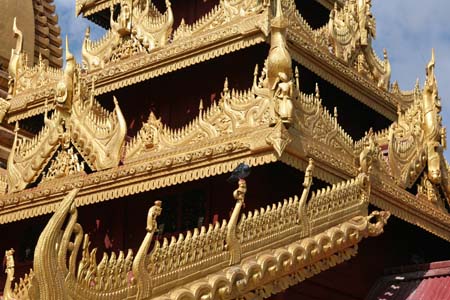
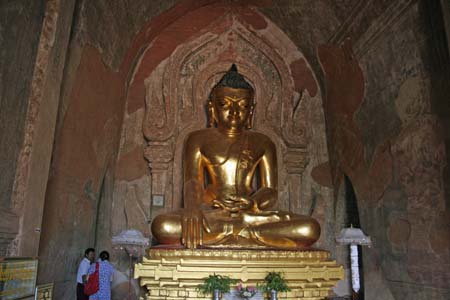
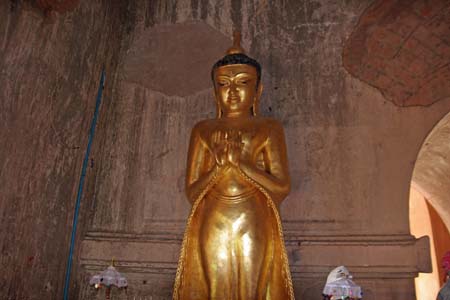

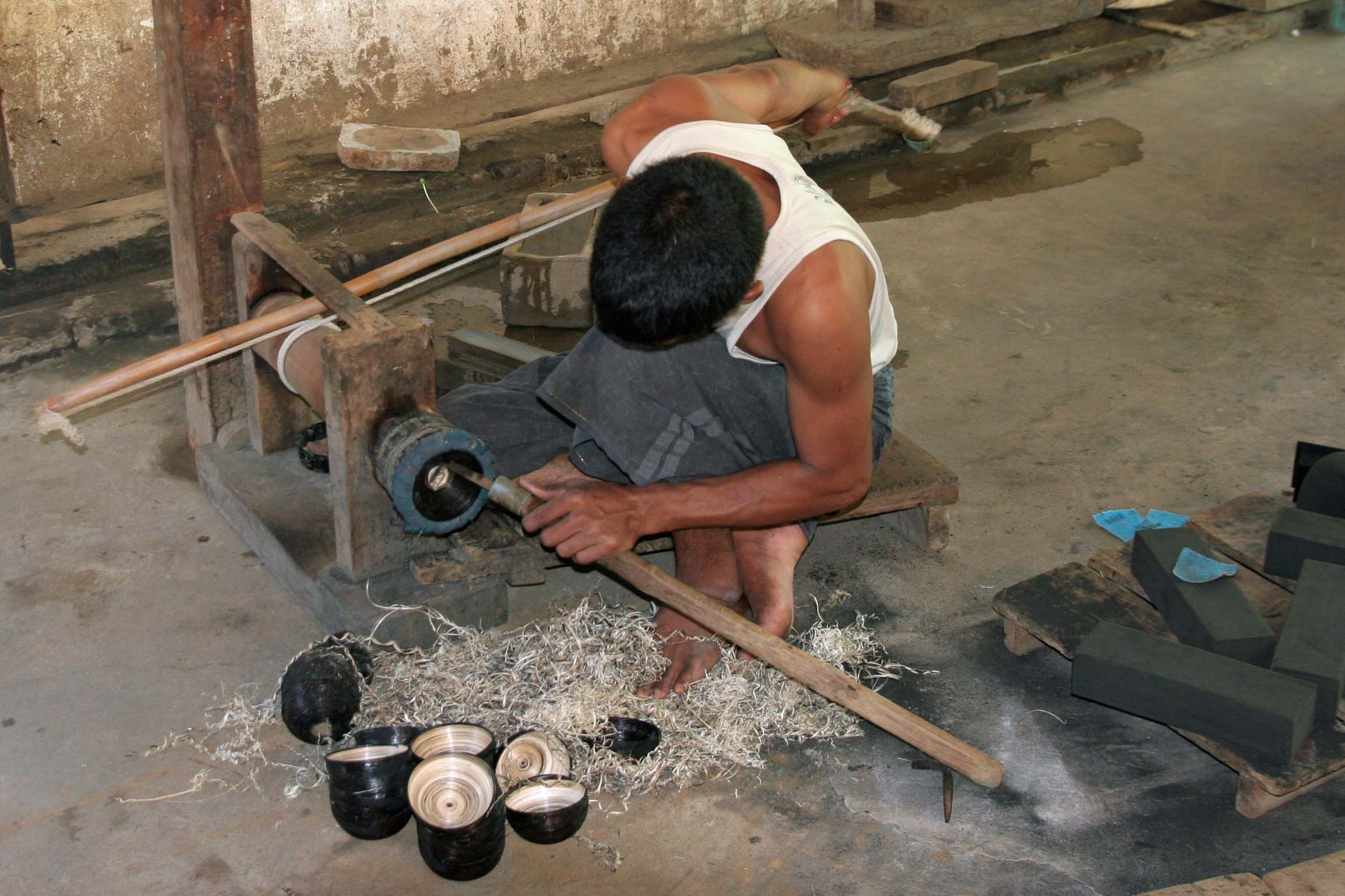

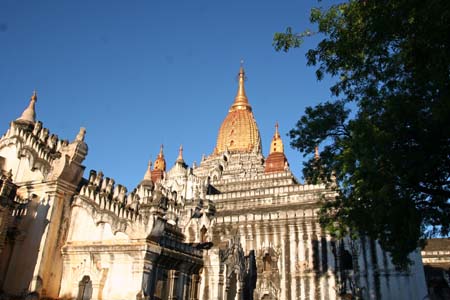



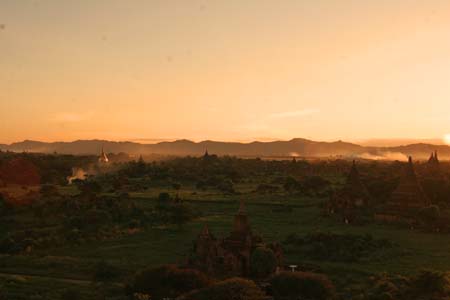
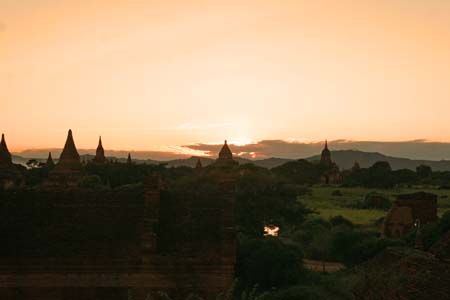
The carved Buddhas waiting for a face could be funny. I guess we could have a whole family’s faces carved into statues … but then where would we display those statues?
The bustle of the marketplace is an interesting contrast to the placid photos of water and stupas. The photos look quiet, so I’m presuming that the sound of the temples is hushed.